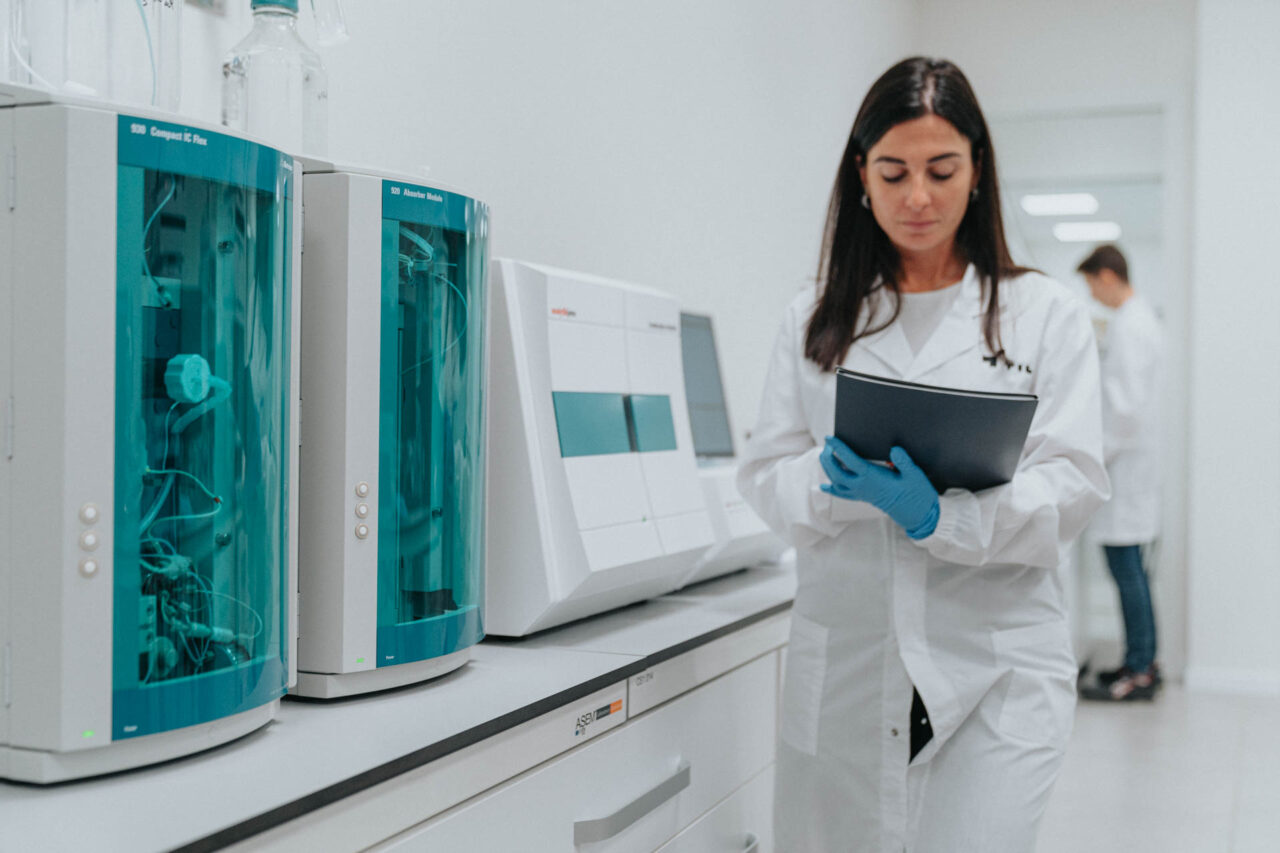PFAS detection in textiles: use of fluorine in reactive dyes for cellulosic fibers could create false positives
TIL's innovative study explores a particular type of substance in view of the enforcement of restrictions

The introduction of restrictions on the use of PFASs within the fashion world is a major challenge with which brands and supply chains in the fashion system are grappling, not least in response to the containment measures approved or in the process of being approved in many countries. However, it must be borne in mind that identifying and measuring PFAS is not a simple operation and sometimes results can be generated that are not easily ‘readable’. In this scenario, the TIL laboratory carried out an innovative study, in collaboration with the company Fratelli Ciampolini spa in Prato, examining an important category of reactive dyes for cellulosic fibres that contain fluorine atoms in their molecules.
And it is precisely this presence of fluorine in the dye molecule that could generate incorrect analytical results, causing these substances to be mistakenly assimilated with the much-feared PFAS (‘false positive’ results).
The investigation is technically complex and can be considered a stimulus for further studies and in-depth investigations in order to prevent restrictions from affecting products that actually comply with legislation and can therefore be correctly marketed.
Total Fluorine/Total Organic Fluorine and Target Analysis: How PFAS is Detected
There are basically two types of analysis used to assess the conformity of articles with PFAS restrictions:
The ‘untarget’ type of analysis (TF: Total Fluorine and TOF: Total Organic Fluorine): these are innovative and recently applied techniques, which make it possible to carry out a broad-spectrum screening of all substances present in the sample containing levels of organic fluorine and therefore also attributable to PFAS;
The ‘target’ type of analyses: these methods focus instead on the determination of specific PFAS molecules (’targets”), for which analytical standards are available. Unfortunately, to date, of the approximately 10,000 known PFAS molecules, only a few dozen standards are available that can be used for ‘target’ analyses.
Why detecting false positives is important
The introduction of PFAS restrictions triggered extensive research to reduce the use of these substances and to identify their technological substitutes. The limits set, in fact, are particularly severe.
In addition to the restrictions that have long existed in numerous legislations, implemented through the application of limits for specific PFASs, which can be determined with ‘target’ analyses, we have recently witnessed the issuing of new restrictions for PFASs based on the detection of Total Fluorine (TF) and Total Organic Fluorine (TOF), i.e. with ‘untarget’ type analyses.
For example, the state of California has set the PFAS restriction by imposing a Total Fluorine (TF) limit of 100 mg/kg from January 2025 and will decrease it to 50 mg/kg from January 2027.
Europe, too, seems to be going in the same direction, in fact, in addition to the existing specific restrictions for some PFAS molecules (‘target’ criterion), a proposal for a general PFAS restriction is being worked on, based on the ‘untarget’ criterion, as a result of which a proposal for a 50 mg/kg limit for Total Organic Fluorine (TOF), applicable exclusively to PFAS substances, is being studied, excluding from the restriction substances that contain inorganic fluorine in their molecules, but which are not classifiable as PFAS.
As a result of the above, it is of particular importance to verify the impact on untarget analyses of those classes of substances that are not PFAS, but which contain organic fluorine in their structures, and which are commonly used in the production processes of articles in the fashion supply chain.
In this regard, TIL has identified the class of reactive dyes for cellulosic fibers that contain fluorine in their molecules, as elements that could generate results characterized by ‘false positives’ in ‘untarget’ analyses and has studied the impact of the molecules of the individual dyes and their dyeing applications with respect to the analytical controls performed with the analytical criteria for Total Fluorine (TF) and Total Organic Fluorine (TOF).
HERE IS THE FULL STUDY

